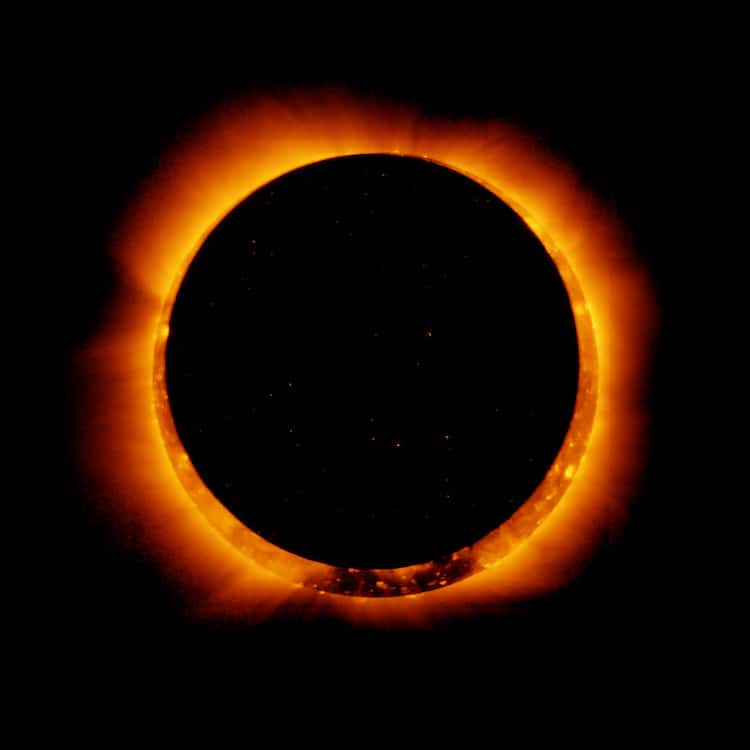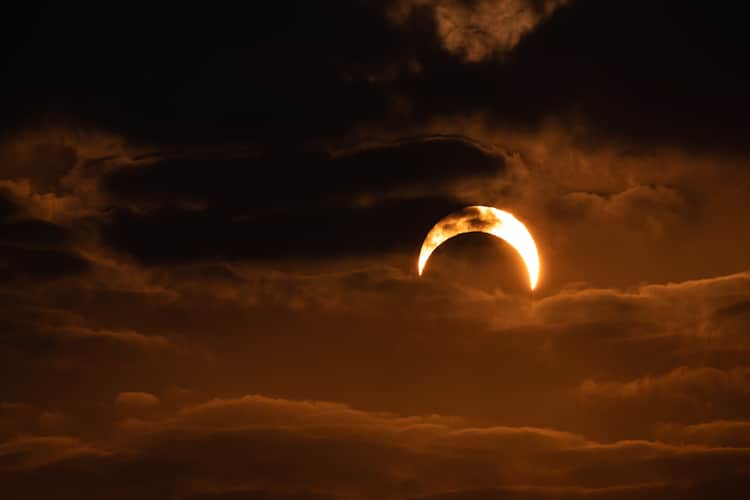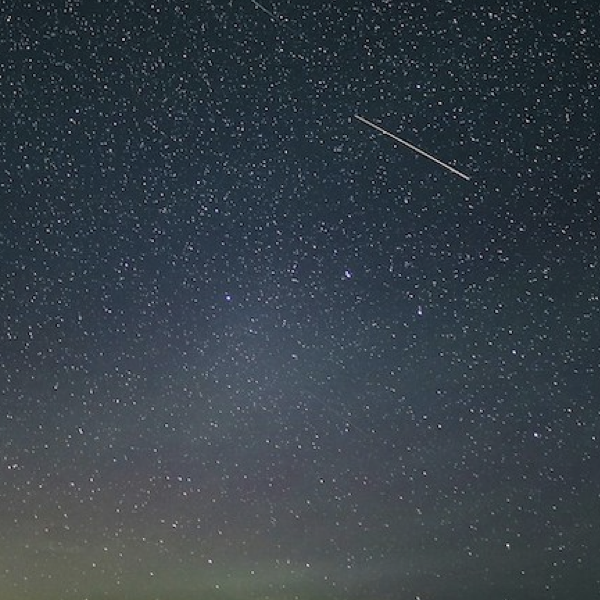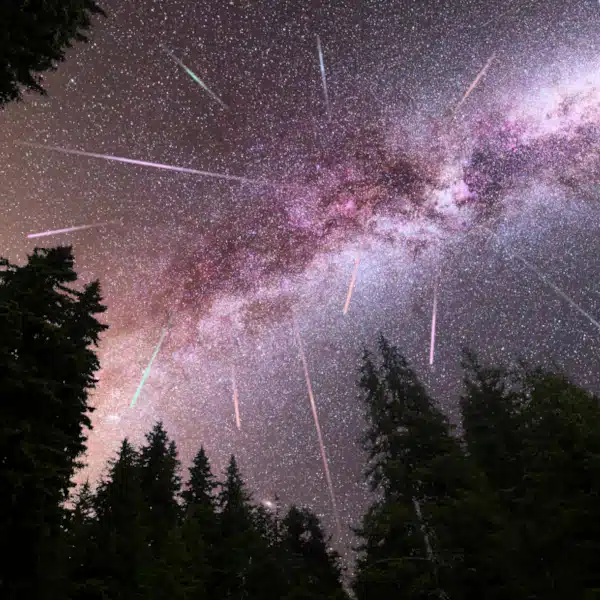
2011 annular solar eclipse. (Photo: NASA)
We've all heard of a solar eclipse, but do you know what an annular solar eclipse is? If not, now is the time to learn, as this rare treat will grace the skies this weekend. It is visible across the Eastern Hemisphere, where stargazers along its path will be able to enjoy this “ring of fire.”
The 2020 annular eclipse will begin on June 21 at 4:47 UTC and peak about two hours later at 6:40 UTC. The entire event will wrap up in a little less than four hours at 8:32 UTC. During this time, those living along its path will see the Moon move directly in front of the Sun. However, as opposed to a total eclipse, the Moon isn't large enough to cover everything. This leads to a “ring of fire” around the edges as the Sun blazes through along the edges.
This type of solar eclipse occurs when the Moon is as far as it can get in its orbit from the Earth. This causes it to appear smaller relative to the Sun and leaves the edges of the Sun slightly uncovered. The last annular solar eclipse happened in December 2019, which was visible across the Middle East and Southeast Asia.

December 19 annular solar eclipse as viewed from Doha, Qatar. (Photo: Stock Photos from Furcoi Sorin/Shutterstock)
This time around, viewers in central Africa, the Southern Arabian Peninsula, Pakistan, Northern India, and Southern China will get the best view of the annular solar eclipse. Those living in Southern and Eastern Europe, Asia, Africa, and Northern Australia will still be able to enjoy the partial eclipse.
As each location will get a good view of the eclipse for about 30 to 90 seconds, it's important to time your viewing carefully. NASA has an excellent map that will help you plan your viewing party. Of course, it's fundamental to ensure that you are protecting yourself if you plan on watching the annular solar eclipse. As with any solar eclipse, you'll need special viewing glasses in order to protect your eyes.
If you aren't along the eclipse's viewing path and won't be able to travel to see it, you'll have to wait until next year to get your glimpse. The next annual solar eclipse will take place on June 10, 2021 and will pass over northern Canada, Greenland, and the northeastern United States.
h/t: [CNN, Science Alert]
Related Articles:
Perfectly Timed Photo Captures a Person “Holding” a Total Solar Eclipse
Artistically Arranged Time Slice Photos Show the Stages of a Total Solar Eclipse
Incredible Photo of a Sunrise During a Solar Eclipse Looks Like the Ocean Has Horns
Perfectly Timed Photo Frames a Solar Eclipse Around a Man Leading a Camel in the Desert






















































































